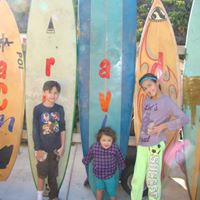Jason Allen Ernst
age ~53
from Saint Charles, IL
- Also known as:
-
- Jason A Ernst
- Phone and address:
- 39W650 Carl Sandburg Rd, Saint Charles, IL 60175
Jason Ernst Phones & Addresses
- 39W650 Carl Sandburg Rd, Saint Charles, IL 60175
- Campton Hills, IL
- Elgin, IL
- 102 Pheasant Trl, Streamwood, IL 60107 • 630 289-1777
- Geneva, IL
- Bartlett, IL
- Windermere, FL
- Kane, IL
- 512 W Chicago St APT 1, Elgin, IL 60123
Work
-
Position:Food Preparation and Serving Related Occupations
Education
-
Degree:High school graduate or higher
Medicine Doctors

Jason Ernst
view sourceSpecialties:
Pain Management
Work:
Dayton Pain Center
1 Elizabeth Pl STE D, Dayton, OH 45417
937 222-2233 (phone), 937 222-9665 (fax)
1 Elizabeth Pl STE D, Dayton, OH 45417
937 222-2233 (phone), 937 222-9665 (fax)
Languages:
Arabic
English
French
English
French
Description:
Mr. Ernst works in Dayton, OH and specializes in Pain Management. Mr. Ernst is affiliated with Good Samaritan Hospital and Kettering Medical Center.
Name / Title
Company / Classification
Phones & Addresses
Vice-President, Sales And Marketing Executive
Omnitronix Corp
Electrical/Electronic Manufacturing · Mfg Electronic Components Whol Electronic Parts/Equipment · All Other Misc Mfg
Electrical/Electronic Manufacturing · Mfg Electronic Components Whol Electronic Parts/Equipment · All Other Misc Mfg
349 Roma Jean Pkwy, Streamwood, IL 60107
Streamwood, IL 60107
630 837-1400, 630 837-1660
Streamwood, IL 60107
630 837-1400, 630 837-1660
Information Technology/internet Support Director
Practical Communications, Inc
Publishing Trade Journals & Mailing Service · Periodical Publishers
Publishing Trade Journals & Mailing Service · Periodical Publishers
1320 Tower Rd, Schaumburg, IL 60173
220 N Smith St, Palatine, IL 60067
847 202-4688, 847 639-9542, 847 934-3346
220 N Smith St, Palatine, IL 60067
847 202-4688, 847 639-9542, 847 934-3346
Manager-human Resources
Rexam Cp Inc
Whol Industrial/Service Paper Whol Nondurable Goods
Whol Industrial/Service Paper Whol Nondurable Goods
700 Corporate Grv Dr, Buffalo Grove, IL 60089
847 808-7200
847 808-7200
Resumes

Franchise Owner
view sourceLocation:
39w540 Carl Sandburg Rd, Saint Charles, IL 60175
Industry:
Electrical/Electronic Manufacturing
Work:
You Move Me
Franchise Owner
Omnitronix Corp
Vice President
Franchise Owner
Omnitronix Corp
Vice President
Certifications:
Iso 9001
Ipc
Ipc

Jason Ernst
view sourceSkills:
Microsoft Excel
Powerpoint
Research
Leadership
Customer Service
Public Speaking
Microsoft Word
Microsoft Office
Powerpoint
Research
Leadership
Customer Service
Public Speaking
Microsoft Word
Microsoft Office

Jason Ernst
view source
Jason Ernst
view source
Jason Ernst
view source
Jason Ernst
view source
Jason Ernst
view sourceLocation:
United States
Us Patents
-
Robotic Packaging Device And Method
view source -
US Patent:7409812, Aug 12, 2008
-
Filed:Jun 29, 2006
-
Appl. No.:11/478059
-
Inventors:Scott C. Gilmore - Elgin IL, US
Jason M. Ernst - Elgin IL, US -
Assignee:Smart Motion Robotics, Inc. - Gilberts IL
-
International Classification:B65B 3/24
-
US Classification:53475, 53258, 53473, 53540
-
Abstract:An end of arm tool that is capable of handling fragile items such as eggs that are packaged in containers (e. g. , egg cartons) that require special handling is provided. The end of arm tool comprises vacuum cup assemblies to grip the top surfaces of the packages, clamp fingers to clamp the edges of the packages, and optionally a pusher assembly to release the packages from the clamp fingers. In addition, a method of loading packages into cases using the end of arm tool apparatus of the present invention is provided. A gripper may be provided to place divider sheets between packages in the cases.
-
Robotic Packaging Device
view source -
US Patent:20090019818, Jan 22, 2009
-
Filed:Jul 7, 2008
-
Appl. No.:12/217545
-
Inventors:Scott C. Gilmore - Elgin IL, US
Jason M. Ernst - Elgin IL, US -
Assignee:SMART MOTION ROBOTICS, Inc. - Gilberts IL
-
International Classification:B65B 5/10
-
US Classification:53475
-
Abstract:An end of arm tool that is capable of handling fragile items such as eggs that are packaged in containers (e.g., egg cartons) that require special handling is provided. The end of arm tool comprises vacuum cup assemblies to grip the top surfaces of the packages, clamp fingers to clamp the edges of the packages, and optionally a pusher assembly to release the packages from the clamp fingers. In addition, a method of loading packages into cases using the end of arm tool apparatus of the present invention is provided. A gripper may be provided to place divider sheets between packages in the cases.
-
Pre-Registration System For Board Placement
view source -
US Patent:6632060, Oct 14, 2003
-
Filed:Mar 13, 2001
-
Appl. No.:09/805787
-
Inventors:Scott Gilmore - Elgin IL
Jason Ernst - Elgin IL -
Assignee:Smart Motion Robotics, Inc. - Gilberts IL
-
International Classification:B42B 1300
-
US Classification:412 9, 412 3, 412 17
-
Abstract:The present invention provides an apparatus and method for pre-registering boards for use in, for example, the manufacture of looseleaf binders and packaging products. Boards are dropped onto the base plate by an automatic process. Spine guides enable the spine portion of the boards to be secured for subsequent registering. The movement of the spine guides allows the spine portion of the boards to be placed accurately. The spine guides are attached to a spine guide rack which is located on the underside of the base plate. The spine guide rack operates through the use of pneumatic cylinders and enables the movement of the attached spine guides. The spine guides move along a spine guide trench and secure boards on the base plate. The spine guides are retracted when the boards are initially placed on the base plate and then start moving medially to squeeze the spine portion of the board such that it becomes perpendicular to the x-axis. The spine guides also allow for the requisite spacing in between the spine panel and the front and back board panels.
Classmates

Jason Ernst
view sourceSchools:
Saint Jude of the Lake School Mahtomedi MN 1978-1987
Community:
Robert Campbell, Sandy Snider

Jason Ernst
view sourceSchools:
Lansingburgh High School Troy NY 1992-1996
Community:
Debbie Andrews, Clinton Norwood

Jason Ernst
view sourceSchools:
Bridgewater High School Bridgewater Swaziland 1992-1996
Community:
Laureen Oickle

Jason Ernst
view sourceSchools:
Western Brown High School Mt. Orab OH 2002-2006
Community:
Shiela Mcguffey, Steve Brownlee, Kathy Ridener

Jason Ernst
view sourceSchools:
Housatonic Valley Regional High School Falls Village CT 1987-1991
Community:
Diane Chinatti

Jason Ernst
view sourceSchools:
Western High School Buda IL 1987-1991
Community:
Joan Kagan, Ken Milby, Bella Fritz, Karen Roush

Jason Ernst
view sourceSchools:
Pilgrim Lutheran School Chicago IL 1984-1989
Community:
Louise Nudelman

Jason Ernst
view sourceSchools:
Wheaton High School Wheaton MN 1984-1988
Community:
Christopher Berg, Marcy Larson, Cory Morrow, Shawn Goarcke, Molly Sanders, Martin Monson, Tanya Lemke, Beatrice Gilbertson, Brenda Smith, Jennie Bertram, Chad Bohnenstingl
Googleplus

Jason Ernst
Lived:
Chicago, IL
Madison, Wi
Crystal Lake, IL
Johnsburg, IL
Madison, Wi
Crystal Lake, IL
Johnsburg, IL
Work:
Model Metrics - Sr Developer
Omicron Technologies
Oprah.com
Organic, Inc
G2 Switchworks
Digitas
Omicron Technologies
Oprah.com
Organic, Inc
G2 Switchworks
Digitas
Education:
McHenry County College

Jason Ernst
Work:
7-Eleven - Field Consultant (2012)
The Pantry - Distict Sales Manager (2010)
The Pantry - Distict Sales Manager (2010)
Education:
University of Phoenix - Organizational Innovation
Bragging Rights:
Broke Conference Record in 330 intermediate hurdles

Jason Ernst

Jason Ernst

Jason Ernst

Jason Ernst

Jason Ernst
Flickr

Jason Ernst
view source
Jason Ernst
view source
Jason Ernst
view source
Jason Ernst
view source
Jason Alan Ernst
view source
Jason Ernst
view source
Jason Ernst
view source
Jason Ernst
view sourceYoutube
Plaxo

Jason Ernst
view sourceModel Metrics
Get Report for Jason Allen Ernst from Saint Charles, IL, age ~53













